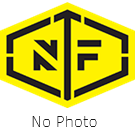| Tools | |
|---|---|
| Model | |
| Room | Laser Room |
| Work envelope/max capacity | |
| Link to manual | |
| Related tools | |
| Trainer(s) | John Hache |
| Training Sessions | |
| Knowledge keeper(s) | |
| Training document(s) | |
| Material Safety Data Sheet (MSDS) | |
| Safe Work Procedure | https://northforge.ca/community/wp-content/uploads/2023/09/Epilog-Helix.pdf#new_tab |
| Consumables | |
| Software | |
| Equipment type | tool |
| Laser Room Precautions apply | ||
|
You will be working in the Laser Room . In order to keep safe from hazards created by you or other workers using any of the tools in this room, the following precautions apply in addition to any other precautions: Safety
Running lasers unattendedDue to risk of fire, do not leave the lasers running unattended. You must be close to the lasers and able to respond quickly in case of emergency. In particular, pay close attention to the laser when it is running in vector mode as the fire risk is greatly increased compared to vector mode. Interlocked enclosures and laser classification
Housekeeping
|

